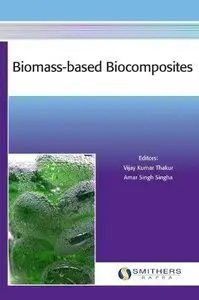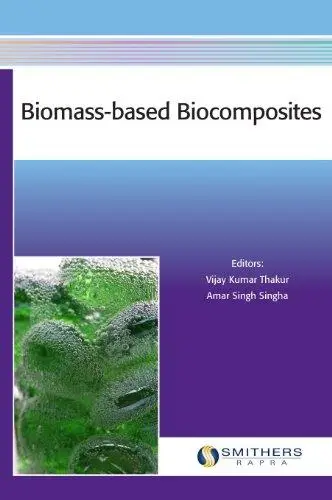Biomass-based Biocomposites By Vijay Kumar Thakur, Amar Sing Singha
2013 | 410 Pages | ISBN: 1847359809 , 1847359817 | PDF | 20 MB
2013 | 410 Pages | ISBN: 1847359809 , 1847359817 | PDF | 20 MB
Green polymer materials from biomass-based natural resources are of paramount importance in a number of fields ranging from biomedical applications to biocomposites. Indeed during the last few years, demand for eco-friendly biocomposites obtained from renewable and sustainable biomass-based resources has increased unceasingly. Plants, including grasses and water plants,.e.g. arrowhead, cattail and duckweed, together with algae and plant by-products such as straw and agricultural wastes, are some of the most promising and most abundant biobased sources of biopolymers on earth and are potentially suitable for use as components in biocomposites. One of the important features of biomass-based materials is that these can be designed and tailored to meet different requirements depending upon the applications. Renewability, low cost, eco-friendliness, easy processing, non-abrasiveness and appropriate mechanical and physicochemical properties are among the most important advantages of using biomass-based materials for the development of green biocomposites. The primary aim of the present book is to give an overview of different kinds of biomass-based biocomposites for different applications, e.g., from biomedical fields to the automotive industry. This book is unique in the sense that it deals exclusively with biomass-based biocomposites which are procured from the biopolymers found in nature. In addition, it covers novel topics related to the synthesis, properties, characterisation and diverse applications of different biomass-based biocomposites including nanocomposites. Some of the salient features of the book are: • It provides a widespread overview about the basic understanding and potential applications of biomass-based biocomposites in different fields; and • It provides an up-to-date working reference on biomass-based biocomposites and includes state-of-the-art techniques and developments in the field. It will be a standard reference book for biocomposites engineers, those studying and researching in this important area, and the automotive industry. Professionals in academia and industry will appreciate this comprehensive and practical reference book, due to its multidisciplinary nature.



